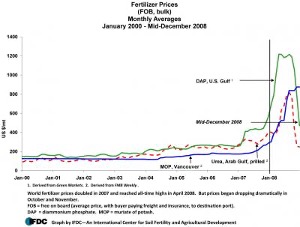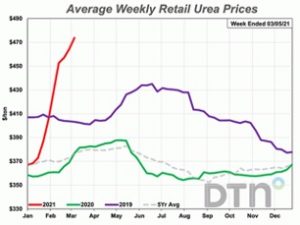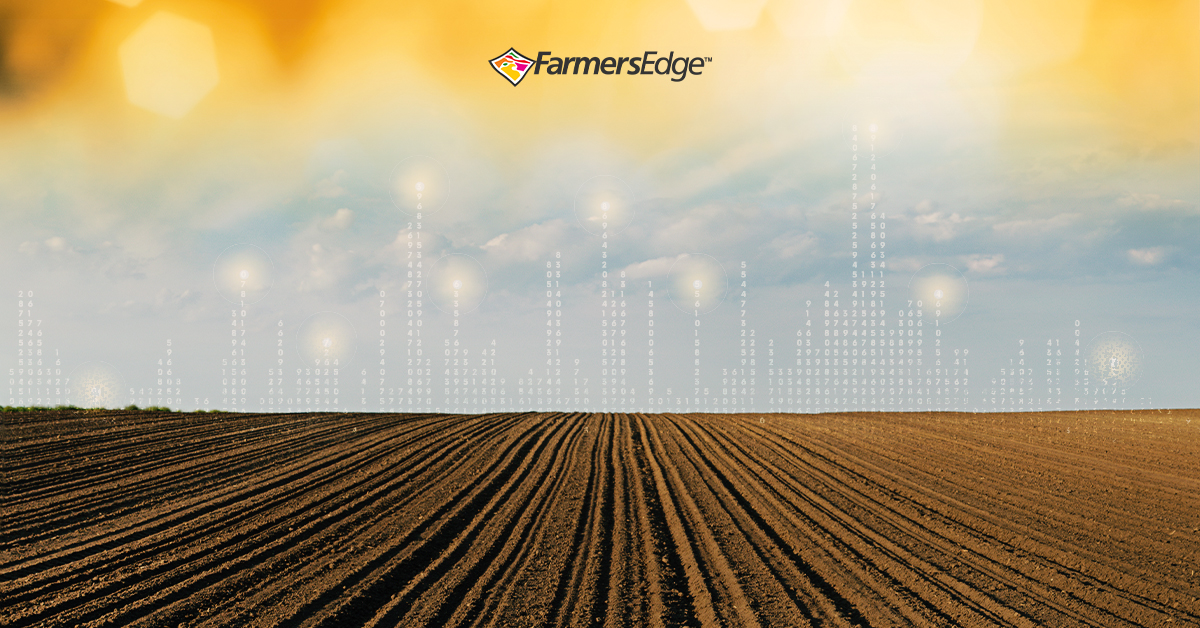 If you haven’t been in to talk with your fertilizer dealer for a while, you may want to be sitting when you ask about fertilizer prices. They have been moving up quickly since fall. For those of you who weren’t able to put your fertilizer down last fall, take it into storage on-farm or pre-price it; this year is going to be a replay of 2008. The cost of some products has risen by 10% in March, on top of already high prices.
If you haven’t been in to talk with your fertilizer dealer for a while, you may want to be sitting when you ask about fertilizer prices. They have been moving up quickly since fall. For those of you who weren’t able to put your fertilizer down last fall, take it into storage on-farm or pre-price it; this year is going to be a replay of 2008. The cost of some products has risen by 10% in March, on top of already high prices.
We’re not yet at 2008 prices, but recently I heard of urea closing in on $500 /ton and NH3 near $600. DAP has risen as well to over $610 per ton.
 The most significant moves have been in UAN and 10-34-0. Both of these products have seen price increases of 12% or more in March. And contacts in the fertilizer trade are telling me there is still room to move higher! The reason? The price of corn has increased. Over the years, we’ve seen a strong link between nitrogen and phosphate prices and the price of corn. We have witnessed corn prices increase over the past four to five months – and a corresponding increase in fertilizers’ price.
The most significant moves have been in UAN and 10-34-0. Both of these products have seen price increases of 12% or more in March. And contacts in the fertilizer trade are telling me there is still room to move higher! The reason? The price of corn has increased. Over the years, we’ve seen a strong link between nitrogen and phosphate prices and the price of corn. We have witnessed corn prices increase over the past four to five months – and a corresponding increase in fertilizers’ price.
In 2008, we saw a rapid price increase all spring, but most of the products’ prices rapidly retreated after planting. With this information as a background, growers who have not secured their fertilizer for this season are asking if they should change their purchase strategy for the 2021 season.
Here are a few observations to guide you.
- If you have a fixed budget for your corn inputs, fertilizer – and specifically N, P, K, and S – are not the places to look at shaving. Today’s high commodity prices signal you should be trying to grow as much grain as economically as you can by optimizing your fertilizer applications.
- Soil testing is a must so that you know you are putting the fertilizer where it is needed. We know there is field-to-field variation but also area-to-area or zone-to-zone within a field. Starting with a soil test will get you to square 1 in optimizing your fertilizer dollars.
- Use the most efficient and cost-effective fertilizer product and placement strategy. You want to improve the Nitrogen Use Efficiency (NUE) or, in other words, get the most yield from every pound of N you apply. This strategy may include using Variable Rate Applications.
- Split nitrogen applications have shown to be 10 – 25% more efficient than a single fall or spring pre-planting application. The efficiency improvements vary with soil textures, nitrogen products, and weather. However, the most significant efficiency improvements are seen in light-textured (sandy) soils when rainfall is high. These soils see significant leaching losses of nitrogen. Heavy textured soils may see high losses in wet conditions, but here, we see losses due to denitrification.
- Improve side-dressing efficiencies by utilizing information from modeling programs such as Farmers Edge’s N-Manager. It simplifies nitrogen management by using applied fertilizer and the weather during the early season to optimize in-season applications, ensuring accurate recommendation values and timing recommendations for broadcast or side-dress applications.
Take a hard look at your “nice to have” list. For instance, unless your soil analysis shows micros in the deficient areas, you might as well not apply there and put the money you save into N, P, K, and S. Research on micros indicate a pretty sharp line between deficient and sufficient. Some labs like to report “marginal levels,” but in realistic terms, “marginal levels” are like an amber light. Going through on amber will likely not cause any problems, just as in all likelihood, not applying a micro that is at “marginal levels” will not cause a yield penalty. It does mean that in the future, you may want to apply this nutrient when prices are lower and build the soil levels – especially if you own the land.
Shoot for sufficiency levels with applications. In years of high fertilizer prices, using a build and maintain fertility strategy is expensive and, in the short term anyway, will not grow you any more yield.
There is still time to get your soil analyzed and use the information to optimize your fertilizer applications. For help or more information, contact your local Farmers Edge Precision Agronomist.


